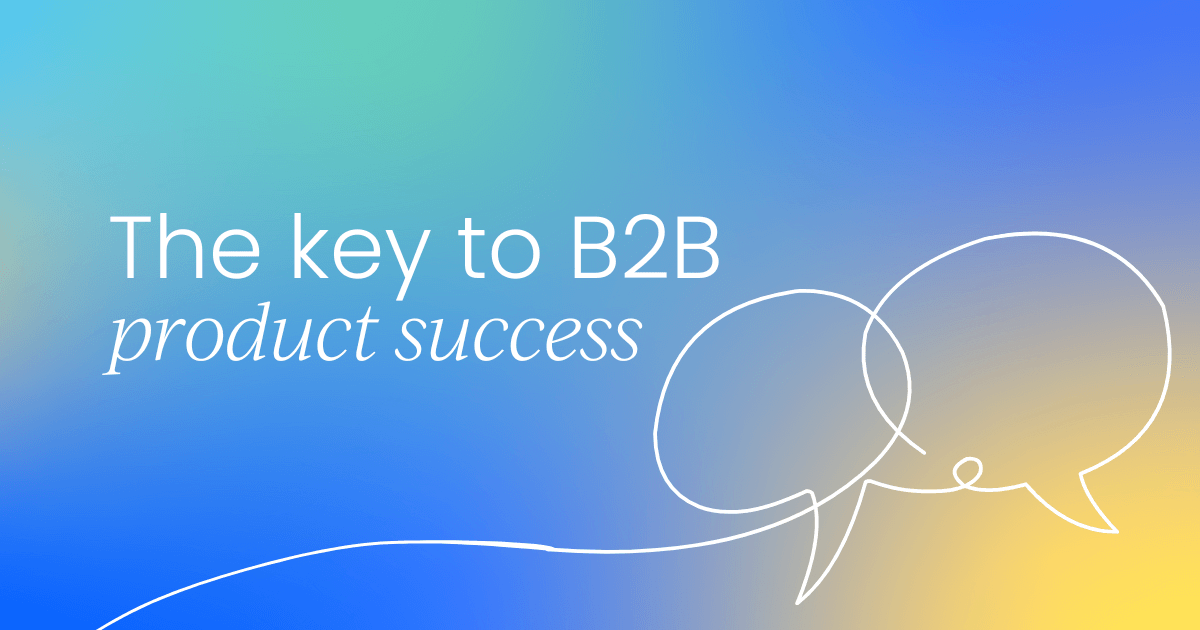When it comes to B2B products, a significant distinction exists between "customers" and "users." A minimal understanding or connection with users can lead to a lack of user-friendly features and products in the long run.
Knowing the right customers is important for a business to sell its USP to the right audience and positioning. A thorough understanding of user personas/behavior helps them build engaging products and thrive in the market.
Customers vs. users
- Customers: These are the entities with whom business deals are made, and they are typically involved in the initial product selling or outreach. The customers handle the complete sales cycle.
- Users: These individuals use the product daily and have a direct impact on its success or failure.
Examples:
- In cloud platforms like Microsoft Azure, Google Cloud, and Amazon Web Services (AWS), users include developers, DevOps professionals, and cloud architects, while customers are Heads of Engineering or CTOs.
- For Revlitix, users are primarily marketing and sales operations professionals and analysts, while customers are CMOs, CROs, or Revops heads.
Apart from the ideal customers mentioned above, the rest of the team members, including finance, IT department, etc, and are invloved in decision-making.
It's important to note that customers can also be users.
Examples :
1. Cloud platforms - CTO/Head of Technology also use these products as admins.
2. Revlitix - CMOs/CROs use Revlitix products as admins and have dedicated modules for them.
The importance of understanding user needs
To create successful products, it is crucial to understand user needs, both directly and indirectly, alongside customer demands. Here are some methods to achieve this:
1. Dogfooding
Dogfooding is the practice of using your own product internally to identify issues and opportunities for improvement before releasing it to customers.
This approach helps in understanding the critical needs of users and can serve as a form of beta testing. For products like Figma and other B2C offerings, this method is relatively straightforward. B2C products are often generic and widely used, making it easier to identify user needs.
A notable example is Deepinder Goyal, who worked as a delivery agent to understand the pain points and needs of delivery executives.
Larger companies like Microsoft benefit from their scale, as they can use their own products—such as MS Teams and Azure—in daily operations, leading to better user testing. In contrast, small-scale B2B products may find it challenging to test internally, often having to wait for feedback post-launch.
At Revlitix, we conduct testing within our marketing and sales teams, as they serve the same user personas. However, due to our smaller scale, it can be difficult to gain in-depth insights into user needs.
Below are a few methods used to navigate across this drawback.
2. Initial customers as beta testers
Engaging initial customers as beta testers is vital for crafting better user experiences through quick checks on features. Having customers who operate at scale and involving users in testing can provide valuable insights early in the development process.
3. Identifying user needs indirectly
Identifying user needs proactively and proposing solutions fosters trust among users and leads to more user-friendly products in the long term. For instance, when users repeatedly report issues or suggest improvements, it indicates a demand for those features. Prioritizing these requests and monitoring the usage of power users can result in a more refined product.
At Revlitix, we frequently receive product improvement requests from users. Observing recurring requests from multiple users highlights essential features and allows us to focus on current user needs rather than merely rolling out new features.
It is crucial to validate these requirements to ensure they align with our unique selling proposition (USP), long-term business goals, and overall user utility. Occasionally, we reject requests that do not fit our product vision or cater only to specific users as explained in the next method.
4. Requirements specific to users
In B2B products, users often demand specific features tailored to their needs. Even when serving a defined set of business personas, requirements can vary significantly across industries.
Eg: Some of our users at Revlitix have requested metrics related to video ads, as they run campaigns across various channels. Similarly, CRM platforms like Salesforce are frequently customized, leading to requests for additional objects beyond standard categories like "Leads" and "Opportunities."
Navigating these requirements:
Catering to the specific needs of companies is essential in the B2B sector. Enabling the dynamic addition of user data allows companies to access information as per their requirements, making the product more robust and appealing to a broader customer base in the long run.
Ultimately, understanding the specific needs of both customers and users is crucial for thriving in the market and achieving product-market fit (PMF).
Are you ready to dive headfirst into the exciting realm where AI and product management collide?
Check out our AI Product Manager's eBook – your ultimate guide to navigating the ever-evolving landscape of product management in the age of artificial intelligence.




 Follow us on LinkedIn
Follow us on LinkedIn




